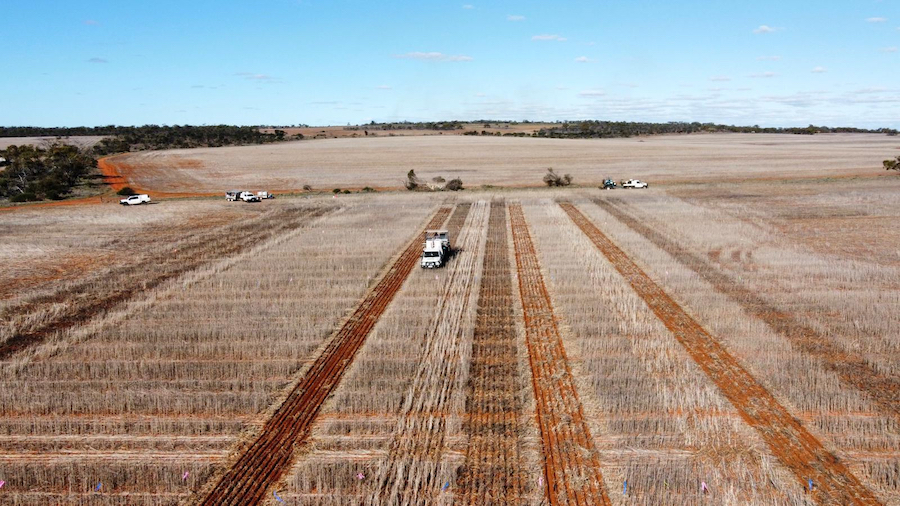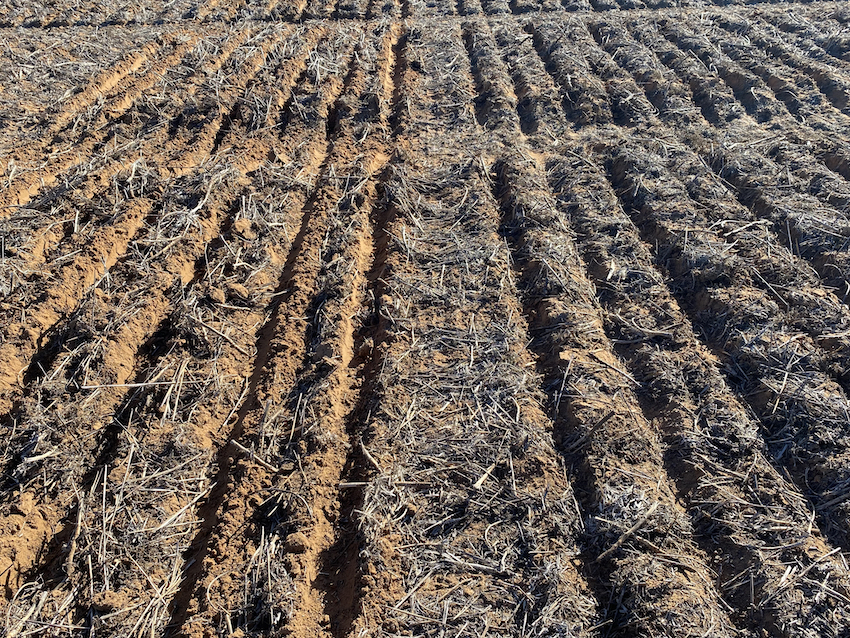In the northern agricultural region (NAR) in Western Australia there are some growers already implementing either disc seeding or stripper front harvest, with a few implementing the complete ‘strip and disc’ system. While it is important to understand all of the impacts associated with changing from a short to a tall retained stubble system, in the NAR there is a strong emphasis on weed control.
Growers want to be confident they can maintain weed control if they maximise stubble retention with a strip-and-disc system. Currently, the main concern or limitation is the efficacy and safe use of grass pre-emergent herbicides.
A project is underway to assess the efficacy, crop safety and longevity of old and new pre- and post-emergent herbicides to control weeds in a range of crops using a disc seeding system. This GRDC investment aims to provide growers in the NAR with an understanding of the implications on weed control of changing harvest systems to implement a tall standing residue strategy.
Trials in four locations across this region from Mingenew to Ogilvie are comparing 17 different herbicide treatments in wheat, canola and lupins in a range of soil types. In year two, the trials will also test droplet deposition and herbicide efficacy into stubble cut to three different heights. The project will primarily target annual ryegrass and wild radish, with a secondary focus on brome grass, capeweed, doublegee and wild oats.

Drone image of a field trial that is testing establishment of canola in strip-and-disc versus knife-point and press-wheel seeder systems in short stubble. The trial is exploring nitrogen strategies and the effect of tillage and stubble on weed control. Photo: Grant Thompson
The 2022 findings
The 2022 trials involved treatments being applied immediately before sowing and/or early post-emergent, with disc seeding being compared with the standard practice of using knife-points and press-wheels.
The trials measured crop establishment, phytotoxicity, vigour and weed control. All trials were taken through to harvest to measure crop yield and grain quality. Normalised difference vegetation index (NDVI) assessments were completed at eight weeks after sowing to calculate any differences between the crop canopies.
Overall, the knife-point and press-wheel plus herbicides approach resulted in the highest level of plant establishment and early crop competition in all trials. In most cases this also resulted in the highest level of weed control and resulting grain yield.

Disc seeder versus knife-point seeder furrows after seeding a pre-emergence wheat herbicide trial. Photo: Grant Thompson
The trial also found some safe combinations of pre- and post-emergent herbicides that would provide acceptable levels of grass and broadleaf weed control in disc seeding. This was particularly the case in wheat.
It would appear, however, that some herbicides should not be used in disc seeding systems due to impacts on establishment. Luckily, the kind finish to the 2022 season allowed the reduced plant density plots to recover and produce grain yields that did not reflect the early crop injury caused by more aggressive herbicides.
The lupin trial at Yuna showed that, irrespective of herbicide treatment, seedbed moisture levels and proximity to follow-up rainfall are important for lupin establishment with disc seeders. In this trial, the knife-point/press-wheel seeding system achieved superior plant establishment and crop safety in marginal moisture.
The canola trial at Ogilvie showed that without any incorporation of herbicides from soil throw, the pre-emergent herbicide treatments were not sufficient to control a high infestation of ryegrass. Canola in disc seeding systems will be heavily reliant on post-emergent spraying to control grass weeds.
Similar to the lupin trial at Yuna, this trial highlighted the importance of follow-up rainfall on top of disc seeding in light sand to achieve a good level of plant establishment.
The project will continue into the 2023 season, researching droplet deposition and application of herbicides on to different stubble heights, green-on-brown spot spraying in different stubble heights, and knockdown and pre-emergent herbicide efficacy, followed by disc seeding in wheat.
More information: Grant Thompson, grant@cropcircleconsulting.com.au

























































